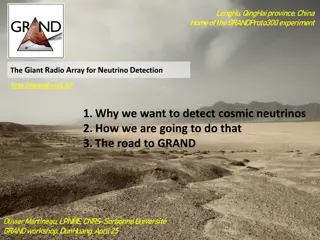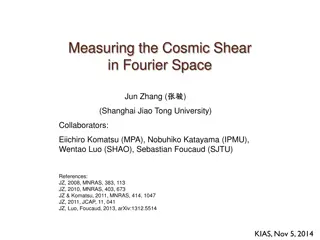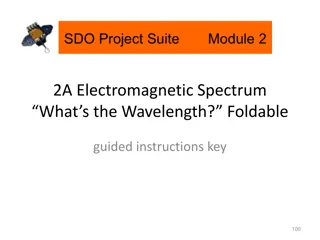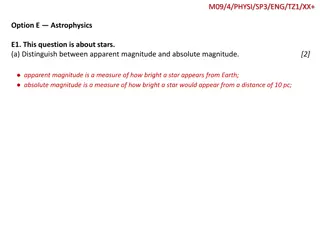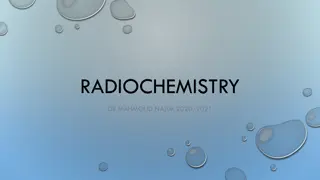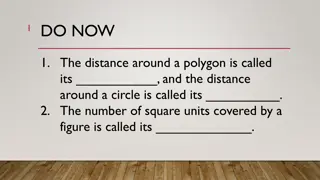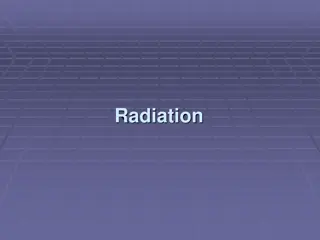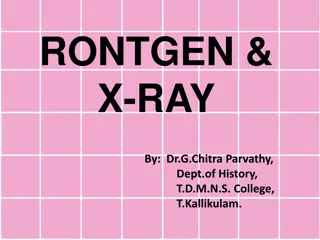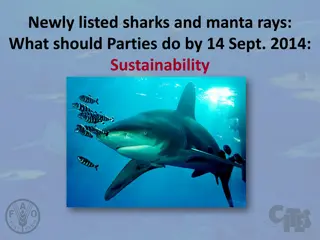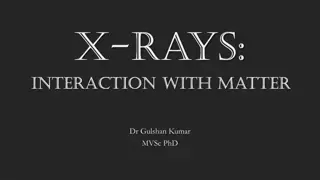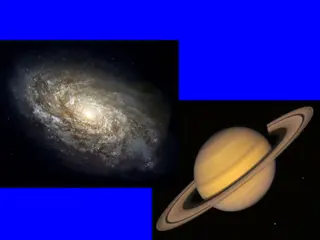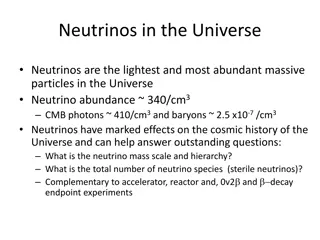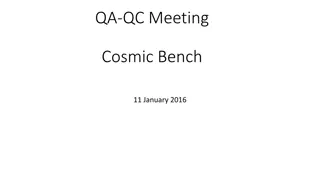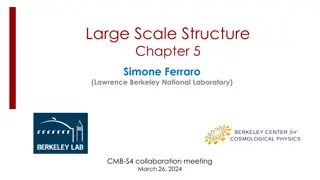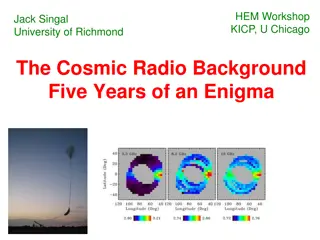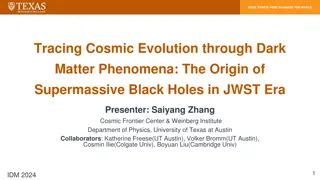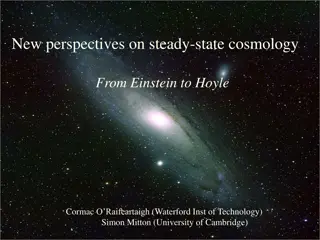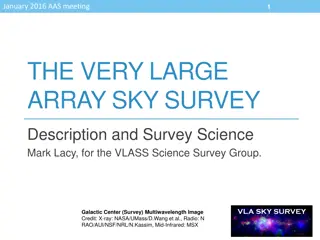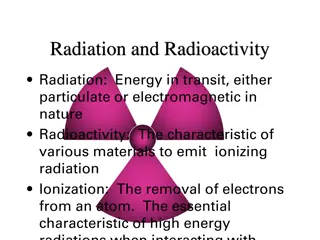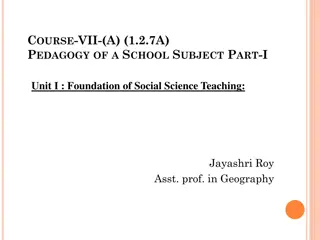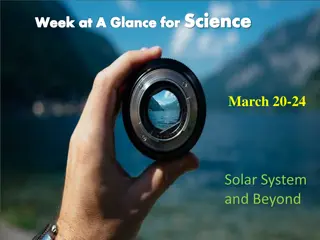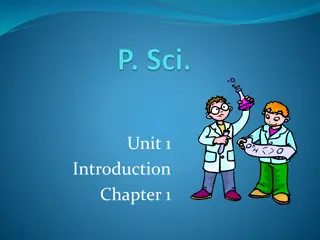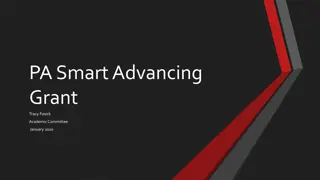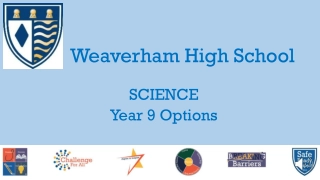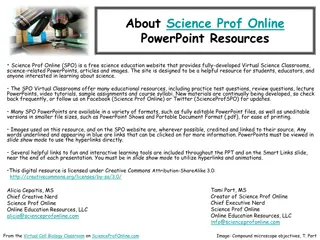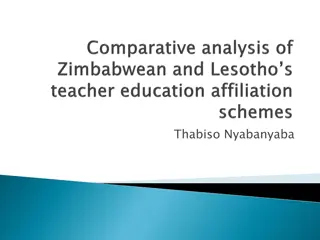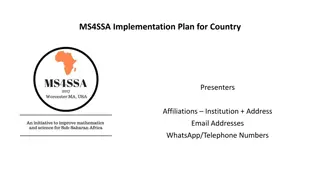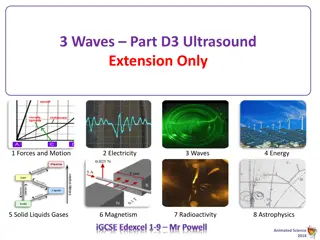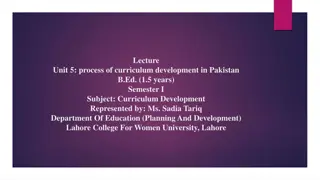Exploring Electroscope and Cosmic Rays in Science Education
This lesson pack delves into the construction and use of the electroscope, understanding static electricity, and detecting cosmic rays. Students engage in hands-on activities, explore the atom's structure, and learn about the interaction of particles with Earth's atmosphere. With a focus on inquiry-based learning, the lessons aim to deepen students' understanding of astroparticle physics in a fun and engaging manner.
Download Presentation

Please find below an Image/Link to download the presentation.
The content on the website is provided AS IS for your information and personal use only. It may not be sold, licensed, or shared on other websites without obtaining consent from the author. Download presentation by click this link. If you encounter any issues during the download, it is possible that the publisher has removed the file from their server.
E N D
Presentation Transcript
From the electroscope to cosmic rays Astroparticle Group C Maria Barouta, Panagiotis Kanychis
Background information for teachers Knowledge of the atom s structure (atoms consist of a nucleus containing protons and neutrons, surrounded by electrons). Protons are positively charged and electrons negatively charged particles. Knowledge of static electricity (attraction and repulsion of opposite respectively). Construction, use and utility of the electroscope. What is electroscope discharge time? What cosmic rays are and how we detect cosmic rays using an electroscope. and like charges
Overview of this lesson pack: Construction, use and utility of the electroscope Name of the activity Static electricity, Electroscope, Electroscope Discharge time, Detection of Cosmic Rays Topics introduced GREECE: Science, 5th grade Chapters: Static electricity , The electroscope (p. 94-100 of workbook), Arts (cross-curricular approach). Curriculum Connection https://www.youtube.com/watch?v=4aQOe98MC4s Reference Demonstrator https://www.youtube.com/watch?v=91801Y1lsCg 11 years old Age of students 2 hours (90 min.) Duration
Overview of this lesson pack: Experiment in the classroom designed according to the inquiry-based form of learning. Type of activity Teacher activities: a)Demonstration and implementation of the electroscope s experiment, b) Give the students the stimulus to think about cosmic rays interaction through historical facts and data. Description of activity Student activities: a) Construction of an electroscope with simple materials (connection with Playing with Protons ), b) use of newly acquired knowledge to discuss about cosmic rays and particles interaction with earth s atmosphere. Materials for the electroscope s construction (glass jar, aluminium foil leaves, scissors, copper wire, cardboard, tape, tissue, plastic straw), PC with internet connection, projector. Equipment requirements Atom s structure. Opposite charges attract each other and like charges repel each other. When we rub a plastic straw on a tissue, the straw is negatively charged. When we rub a tissue on a plastic straw, the tissue is positively charged. Prior knowledge for students
Background and overview of the, electroscope discharge time and cosmic rays demonstrators: The includes the concept of the different ways in which we can discharge a charged electroscope. Before the demonstration students will try to do the same by touching the wire of their electroscope with their hand. Then, they will see all other ways (radiation and X-rays) through the video. The analysis of how different factors affect electroscope discharge time will allow students to make a connection between the electroscope and the detection of cosmic rays and discuss their ideas in the classroom. Video: https://www.youtube.com/watch?v=4aQOe98MC4s electroscope discharge time demonstrator
The cosmic rays demonstrator includes the concept of the cosmic rays, presenting historical facts about their detection, in 1912 from Victor Hess using the electroscope, and the scientific facts the scientific community has so far. Students will have the chance to discuss this specific topic and reflect on how cosmic rays affect our everyday life. Video: https://www.youtube.com/watch?v=91801Y1lsCg
From the electroscope to cosmic rays Students Presentation
Two objects with static charges can attract or repel each other. If the charges are the same (both positive or negative they will repel). If the charges are different, they attract.
Lets figure some more things out! Materials glass jar 2 aluminium foil leaves scissors copper wire cardboard tape tissue straw Step 1: Bend the copper wire at one edge and attach the two aluminium foil leaves. Step 2: Cover the glass jar with cardboard, stabilise it with tape and make a small hole to insert the copper wire with the aluminium foil leaves.
Step 3: Rub the straw on the tissue and then get the straw close to the edge of the copper wire which is outside the glass jar. What do you observe? Why you think is that happening? (Brainstorming) Write your conclusion.
Your electroscope should be something like this...
Charging electroscope: done! What about discharging it? How can we do that and how much time will it take? (Brainstorming) Write your conclusion. Let s have a look! https://www.youtube.com/watch?v=4aQOe98MC4s
Now, a little bit of history! In 1912 Victor Hess set out to explore variations in the atmosphere s level of radiation, on board a flying balloon during an eclipse, which had been thought to emanate from the Earth s crust. What did his measurements show? Radiation actually increased at greater altitudes and the Sun could not be its source.
Cross-curricular approach with Arts Music: How do cosmic rays sound like?? (Activity using a musical instrument or sonification software). Art: How do you imagine cosmic rays? Paint it!
Resources Chaniotakis, M. (2020). Ionizing radiation and the electroscope (Lesson plan). Nantsou, T. (2017). Cosmology with simple materials. Playing with Protons, Greece. Retrieved from: https://indico.cern.ch/event/618792/contributions/2695835/attachments/ 1521400/2378549/FINAL_2017_Playing_with_Protons_.pdf Images Image 1: https://images.app.goo.gl/Q9bDeC1WiQLr3B5s9
Image 2: https://images.app.goo.gl/1PCWE3rHTyKbCjZk9 Image 3: https://images.app.goo.gl/1W67oCEKj9Vw5fs3A Image 4: https://images.app.goo.gl/DqDWiZkso2xdCx66A Image 5: https://images.app.goo.gl/2GE7HtXQ3JC717AM6 Image 6: https://images.app.goo.gl/3uWBkzxbm8oRKCGs7 Image 7: https://images.app.goo.gl/HGydzVD4HzxeKwQc7
Thank you very much for your time and attention!


